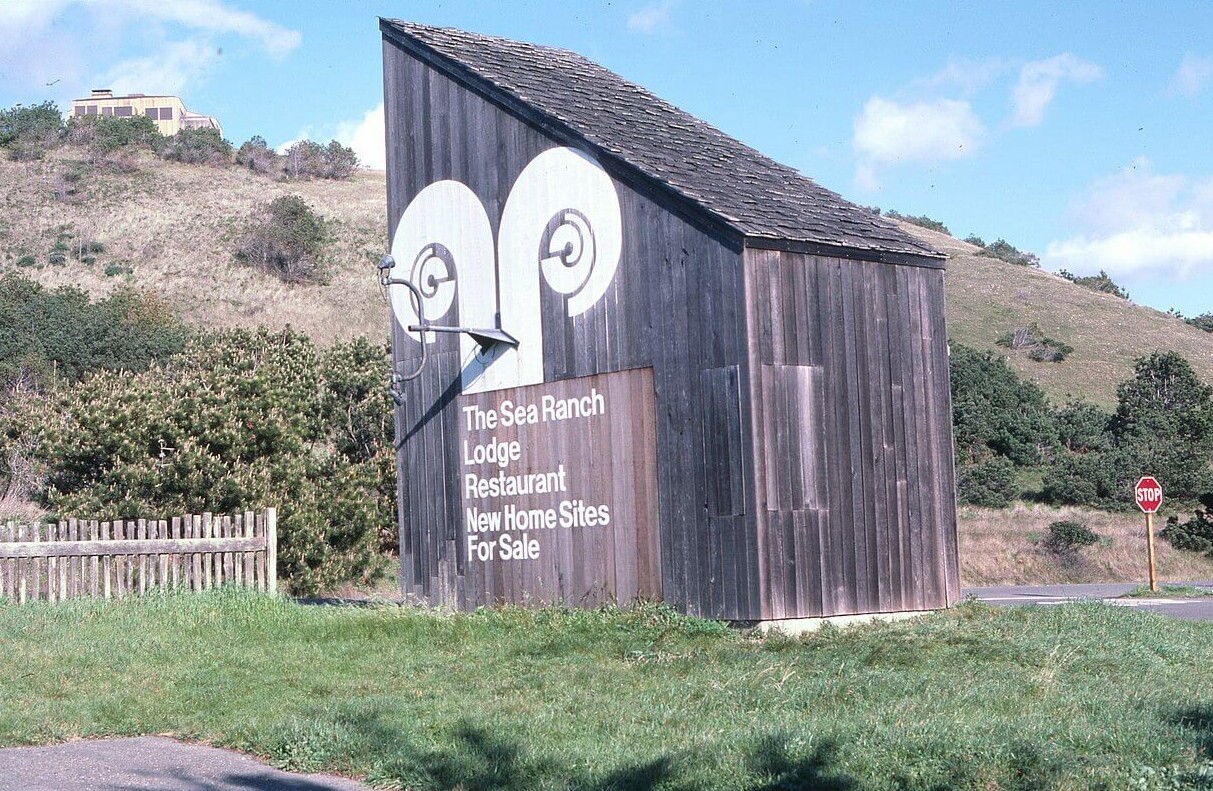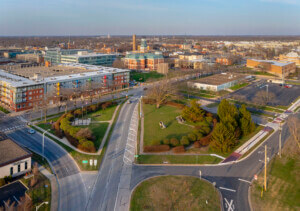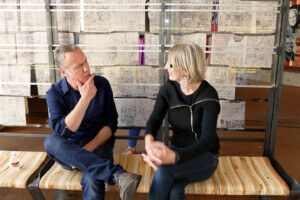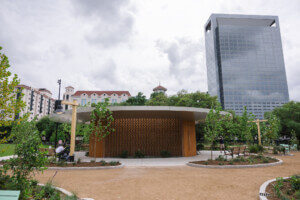Barbara Stauffacher Solomon, the heralded landscape architect and graphic designer, died at her home in San Francisco on May 7 at age 95. News of her passing was confirmed by her daughter, Nellie King Solomon, and later reported by The New York Times.
Friends and family endearingly called the late artist “Bobbie.” In 2020, a retrospective indebted to her was organized by Brooke Hodge at the Palm Springs Art Museum, Barbara Stauffacher Solomon: Breaking All the Rules.
Throughout her career, Stauffacher Solomon collaborated with myriad architects and artists, including Vito Acconci, Pascal Cribier, Stanley Saitowitz, and many more icons. Some of her best known clients were the San Francisco Museum of Modern Art (which later became SFMOMA), the Walker Art Center in Minneapolis, and even Scanlan’s Monthly—a lefty, hippy mag run by gonzo journalists Sidney Zion and Warren Hinckle that crusaded against President Nixon.

Stauffacher Solomon’s work is in SFMOMA’s permanent collection, and has been featured in the Whitney Museum, Venice Biennale, Berkeley Art Museum, Pacific Film Archive, LAX Art, and the Graham Foundation.
In 1964, Stauffacher Solomon was the only woman on the design team for Sea Ranch Lodge—a Sonoma County, California, utopia by landscape architect Lawrence Halprin and architects Al Boeke, Charles Moore, Richard Whitaker, Joseph Esherick, Donlyn Lyndon, and William Turnbull Jr.
Today, Sea Ranch Lodge is known for embodying “California cool,” a postmodern aesthetic that combined pop art, abstract expressionism, and the Swiss international style—where Warhol meets Corb. Her Sea Ranch Lodge design vision was given two AIA awards and later championed by Ada Louis Huxtable.

In 1984, when Ulrich Franzen was tapped to plan new buildings for Manhattan’s Hunter College, Stauffacher Solomon designed signage for the expansion at the 68th Street–Hunter College subway station. Franzen’s two-building addition, which brought art by Tony Smith to the Upper East Side campus, featured a new subway entrance from the tunnels onto Lexington Avenue guided upwards by Stauffacher Solomon’s custom typeface she described as “sleazy Helvetica.” “[Franzen] didn’t want Helvetica,” Solomon recalled. “He wanted something more jazzy.”
The addition at Hunter College by Franzen and Stauffacher Solomon was what the intelligentsia may call a gesamtkunstwerk: The typeface design which begins in the subway was carried out through the new buildings by Franzen, seamlessly integrating public and private. After several decades, Stauffacher Solomon’s “Subway” signage went viral: In 2017, Michael Bierut of Pentagram applauded it, and so did filmmaker Amy Nicholson, and architecture critic Alexandra Lange.
Remnants of good old NY & our most fav typeface ever – at the 68th St 6 entrance. pic.twitter.com/6eAuCPgKQz
— Amy Nicholson (@filmsbyAmy) July 11, 2017
Barbara Stauffacher Solomon (née Barbara Ethel Levé) was born in 1928 in San Francisco. Her mother was Lilian Reinhertz Levé and her father, Fred Levé, was a leftwing lawyer who represented anarchists in the Bay Area.
In 1942, Stauffacher Solomon enrolled at the California School of Fine Arts where she studied ballet while in high school. By 1944, she was performing at venues around the country. The next year, she met Frank Stauffacher, a filmmaker 13 years her senior. They married in 1948, but Stauffacher died in 1956.
After her first husband’s death, Stauffacher Solomon moved to Switzerland to study design at the Basel School of Design with Armin Hofmann. There, she was introduced to the Swiss International Style. She returned to the U.S. in 1961.
Three years later, she was brought onto the Sea Ranch design team by Al Boeke, together with Lawrence Halprin. The project catapulted Stauffacher Solomon, then age 36, into the annals of modernist lore. In 1969, she married Daniel Solomon, an architect and academic. The next year, she won the AIA Industrial Arts Medal and began teaching design at U.C. Berkeley.

Stauffacher Solomon was invited in 1970 by the Minneapolis Planning and Development Division to take part in a brain trust whose goal was reinvigorating Hennepin Avenue, an urban renewal area. There, she crossed paths with Robert Venturi, Philip Johnson, and M. Paul Friedberg who were also on the team. But her work in Minneapolis didn’t stop there: In 1988, she completed Regis Garden with Michael van Valkenburgh at the Walker Art Center’s Cowles Conservatory.
In 1978, Stauffacher Solomon contributed graphic design services for the Franklin Delano Roosevelt Memorial Commission. Three years later, in 1981, she completed her masters in architecture at U.C. Berkeley. Her thesis at U.C. Berkeley became the basis for her first book, Green Architecture and the Agrarian Garden (1989). This was followed by her second book, Good Mourning California (1992).

In 1986, she completed Turia Gardens in Valencia, Spain, together with Ricardo Bofill. In 1995, the late designer completed Promenade Ribbon, a large outdoor public artwork in San Francisco. Around that time, she went back and forth teaching at U.C. Berkeley, Yale, and Harvard. Utopia Myopia was published in 2013 and that same year, her autobiography Why? Why not? was released.
The late designer worked well into her nineties. In 2018, she designed graphics for the Berkeley Art Museum. Then in 2019, she had a retrospective at SFMOMA, which was later relocated to Basel’s Gallery Van Bartha in Basel, curated by Matylda Krzykowski. In 2022 and 2023, she presented EXITS EXIST at Chicago’s Graham Foundation.
“Supergraphics are different from the old, two-dimensional graphics, and they’re more helpful to architects,” Stauffacher Solomon later said about her aesthetic penchant. “I don’t do them to create cute chaos. They are a reinforcement of architecture: You reinforce traffic patterns; it’s an aid to circulation. I’m paid by my clients to solve their problems, not to amuse myself. The purpose of my work is to clarify, not confuse.”
She is survived by her daughter Nellie King Solomon, an artist in the Bay Area.











